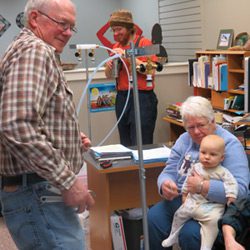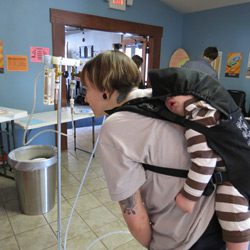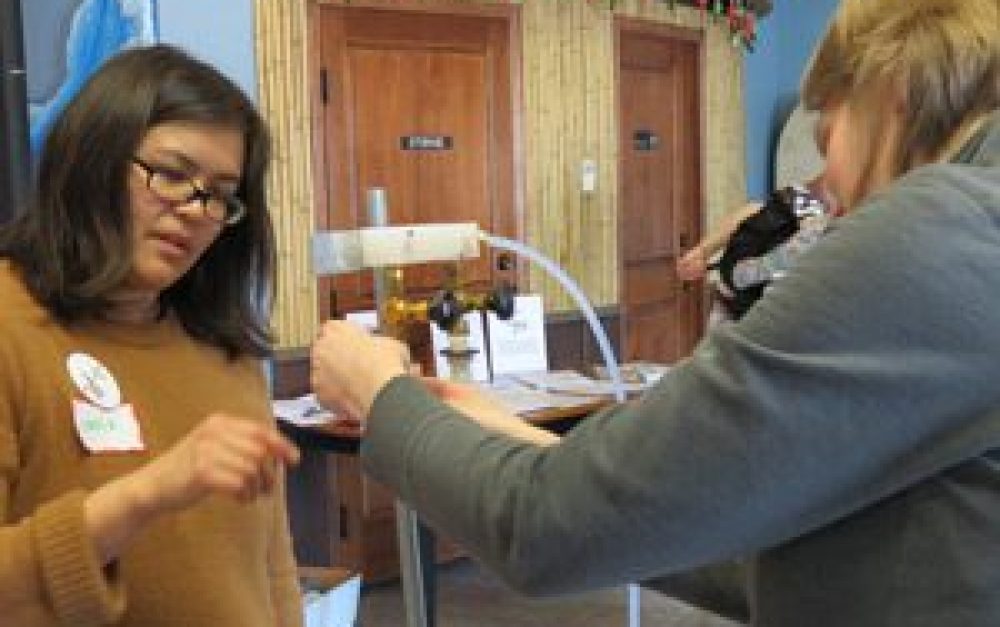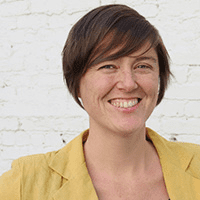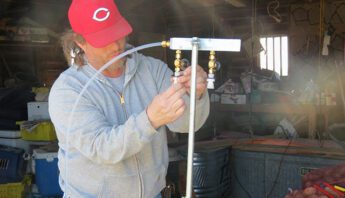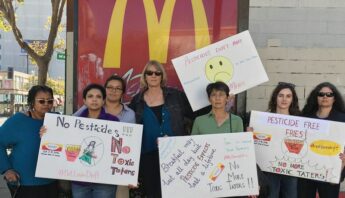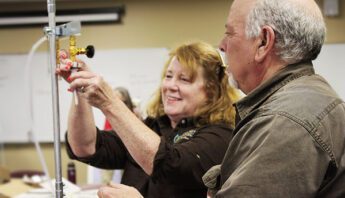Whew! I just got off the road from a wintry, whirlwind tour of farms, churches and schools in Minnesota and Iowa. My colleague Emily Marquez and I completed our last of four Drift Catcher trainings, certifying 26 new citizen Drift Catchers.
The participants are passionate farmers and parents who are affected by pesticide drift each year and want to use PAN's monitoring technology to document that exposure. Together, we'll be working to highlight the very real problem of pesticide drift in the Midwest, and to work towards concrete ways to reduce the health and economic harms of pesticides.
The Drift Catcher is a big part of our Grassroots Science Program, which allows affected communities to tell their stories about pesticide exposure in a credible and scientific way. In this case, we worked with families who have witnessed spray planes flying overhead, livestock poisoned, and confusing health conditions. With Drift Catcher data, we can skip arguments about whether pesticide drift is happening, and go straight to advocating for solutions to stop it.
Building a network
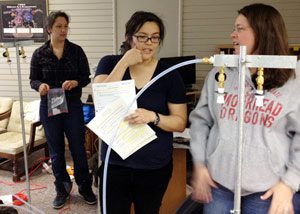 Drift Catching can also bring people together from around the region who are similarly affected by pesticides, but reluctant to speak out on their own.
Drift Catching can also bring people together from around the region who are similarly affected by pesticides, but reluctant to speak out on their own.
This year we were overwhelmed with the number of applicants to our Drift Catcher trainings. Each potential participant had a compelling reason to document pesticide drift, from stories about suspicious tumors and rashes, to farmers who grow local produce but have lost their crops to drift from neighboring fields.
I'm grateful for all the time and dedication these participants bring to the subject of pesticide drift. It's always an honor for me to connect with people who are hopeful enough about the future of our food system to be willing to spend their valuable time and energy fighting for it.
Next up? Solutions.
After getting trained, each of the newly certified Drift Catchers will choose the best site to set up and operate their Drift Catcher. Through these experiments we'll find out which chemicals — and how much of them — are present at each site. We'll then research the health implications for the levels of exposure found.
Then, most importantly, we'll use the data to bring attention to the problem of pesticide drift and to propose concrete changes.
For our participants up in northern Minnesota, this work is part of an already long road towards reducing fungicide drift. That community has been using Drift Catchers since 2006, and last year they released their first round of results, garnering a good deal of media attention.
For another group of young parents in Minnesota, the Drift Catcher will be a tool to advocate for less pesticide use near schools and parks. And in Iowa, many of our participants will tackle what they see as the first important hurdle: being able to prove pesticide drift is in fact happening in their communities.
For each group, I look forward to supporting their goals and working together toward healthy farms, healthy communities and healthy kids.
